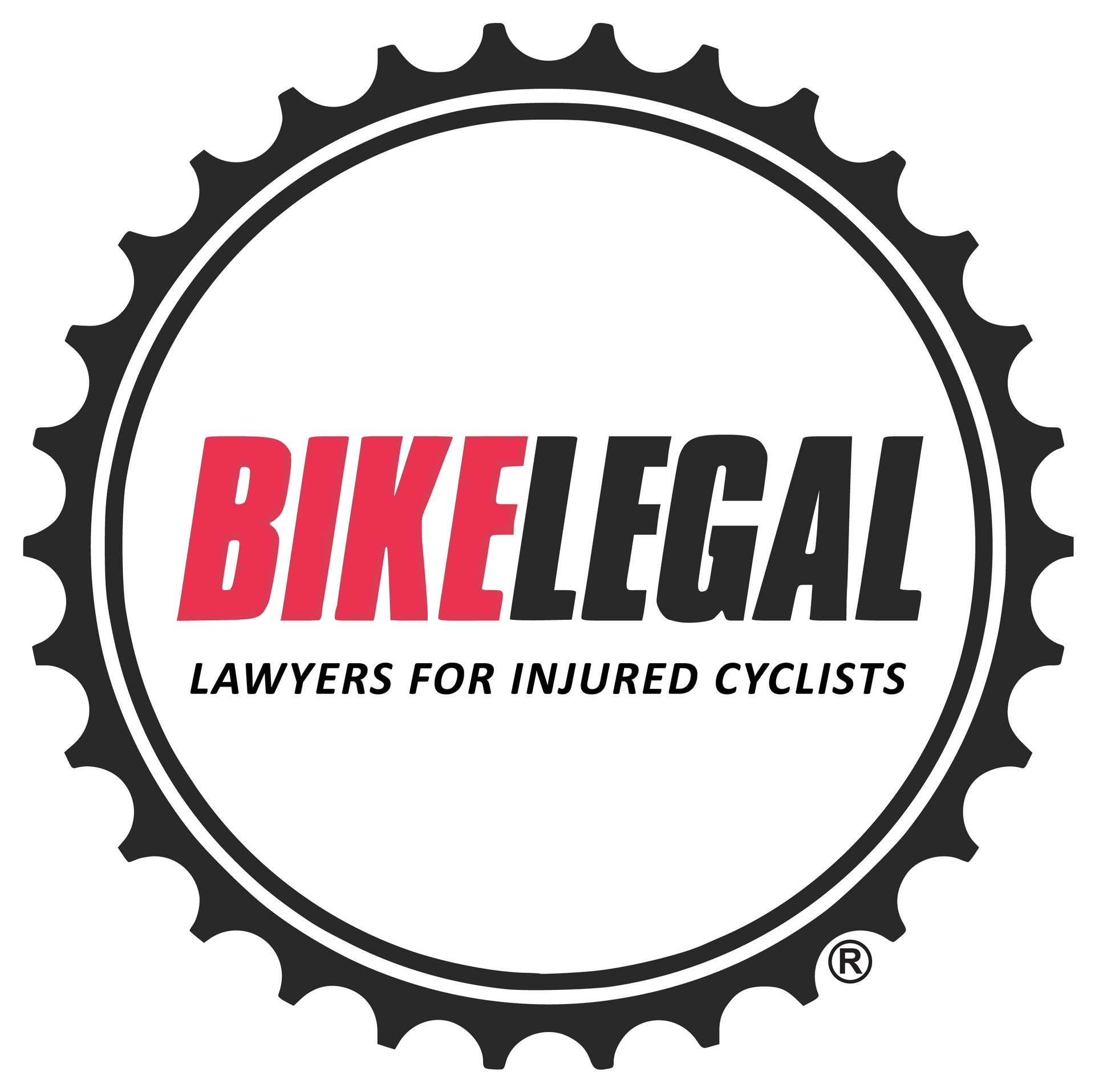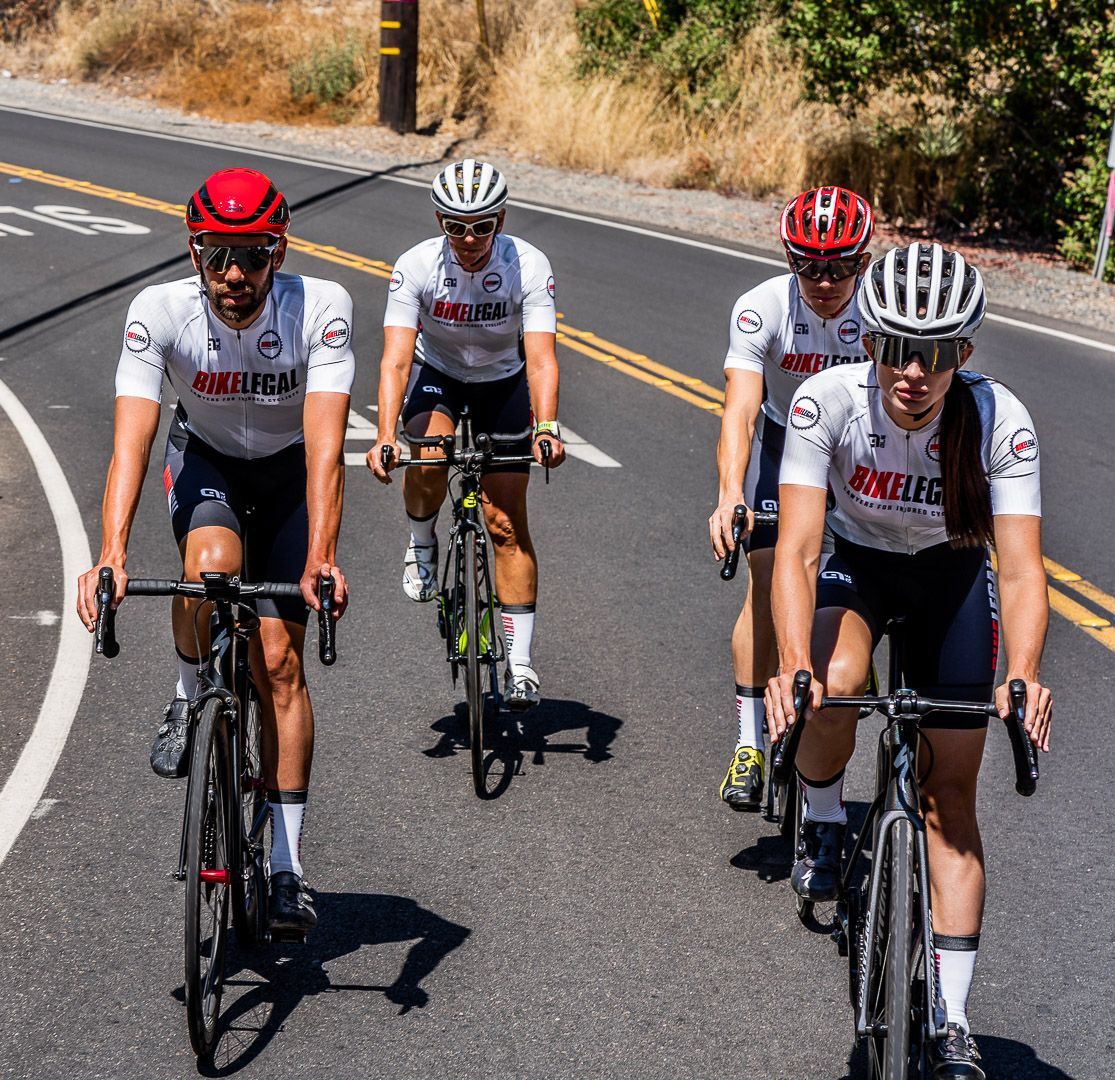Is it Legal to Ride Two Abreast in California? Phil Gaimon's Citation Unravels the Truth
Follow us on
social media!
In August 2024, former pro cyclist Phil Gaimon encountered an unexpected run-in with law enforcement while riding two abreast with a friend on a quiet, narrow canyon road in Los Angeles County. Despite following California’s cycling laws, Gaimon and his friend were pulled over by a sheriff’s deputy who incorrectly insisted that riding side-by-side was illegal.
The interaction, captured in Gaimon’s YouTube video titled “LA Sheriff Gets SCHOOLED by Pro Cyclist,” has sparked a national conversation on cyclists' rights and police accountability.
Watch Phil Gaimon’s viral video as he educates an LA Sheriff deputy on California cycling laws, sparking a national discussion on cyclists’ rights.
California Bicycle Laws: Understanding Vehicle Code 21202 and the Right to ‘Take the Lane’
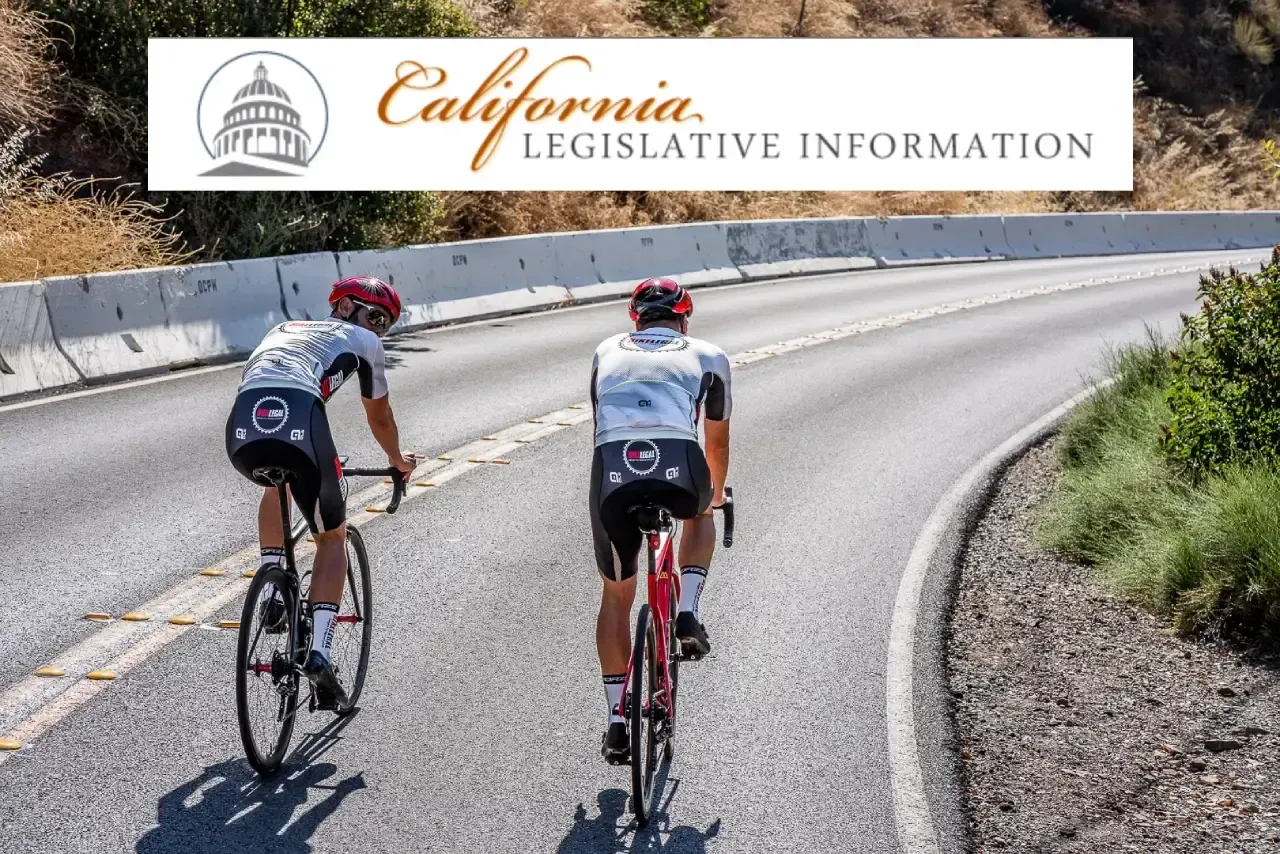
At the core of Phil Gaimon’s traffic citation is California Vehicle Code 21202, which states when cyclists must ride near the right-hand side of the road and when they are legally permitted to “take the lane” for safety. According to the law:
"Any person operating a bicycle upon a roadway at a speed less than the normal speed of traffic moving in the same direction at that time shall ride as close as practicable to the right-hand curb or edge of the roadway except under any of the following situations:"
- When overtaking and passing another bicycle or vehicle proceeding in the same direction.
- When preparing for a left turn at an intersection or into a private road or driveway.
- When reasonably necessary to avoid conditions (including, but not limited to, fixed or moving objects, vehicles, bicycles, pedestrians, animals, surface hazards, or substandard width lanes) that make it unsafe to continue along the right-hand curb or edge, subject to the provisions of Section 21656. For purposes of this section, a “substandard width lane” is a lane that is too narrow for a bicycle and a vehicle to travel safely side by side within the lane.
- When approaching a place where a right turn is authorized.
Learn more: California Bicycle Laws and Accident Statistics
Why Phil Gaimon Was Pulled Over: Misinterpretation of the Vehicle Code by Law Enforcement
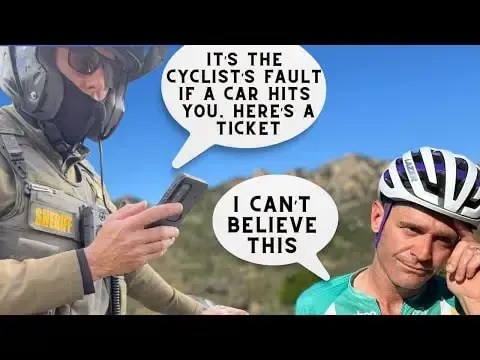
The incident began when the sheriff’s deputy pulled up beside Gaimon and his friend, claiming it was illegal to ride side-by-side. Despite Gaimon’s polite clarification of the law, the deputy insisted that cyclists are required to ride single file to avoid being hit by cars, effectively blaming cyclists if an accident were to occur.
At one point, which you'll hear at the very beginning of the video, the deputy agrees to say that, 'Phil should ride single file because if not, cars would hit him and that would make it his fault (0:00-0:10).
California Vehicle Code 21202 does not prohibit cyclists from riding two abreast while taking the lane. The law provides clear exceptions allowing cyclists to occupy a full lane for safety, such as on narrow or hazardous roads, but it does not include any restriction against riding side by side in these situations.
Riding two abreast is fully consistent with the law and often enhances safety by increasing visibility, discouraging unsafe passing, and ensuring a more defensive positioning in lanes that cannot be safely shared with vehicles.
In Phil Gaimon’s situation, riding two abreast on a narrow canyon road fell well within the exceptions outlined by 21202. By riding side-by-side, he and his friend were occupying a “substandard width lane” where safe passing was not possible within the lane’s confines. Thus, the cyclists’ decision to “take the lane” and ride two abreast aligned with both the law and best safety practices.
This interaction highlights a persistent issue: law enforcement officers misunderstanding or misapplication of cycling-related laws. Although the deputy found the relevant code, his interpretation was both “bizarre” and incorrect, as Gaimon put it. The deputy ultimately issued a citation based on a misreading of the law, assuming cyclists must stay to the far right, regardless of lane width or safety considerations.
Case Dismissed: The Deputy’s Absence and Its Impact on Cyclists
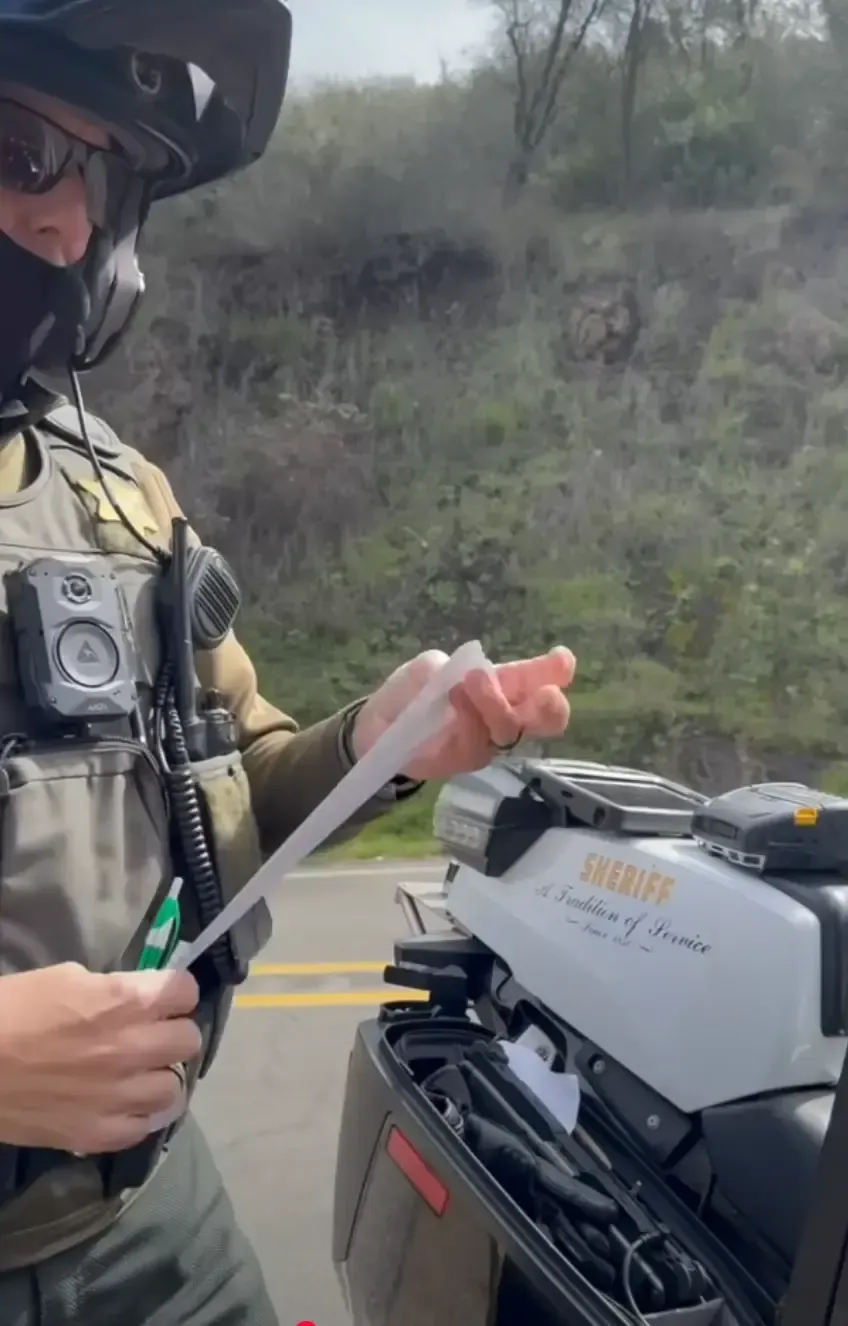
With the support of Bike Legal, Phil Gaimon meticulously prepared his defense for the court, gathering evidence to demonstrate the narrow lane conditions and road hazards that justified his decision to take the lane and ride two abreast. He planned to question the deputy about his understanding of Vehicle Code 21202 and its exceptions, hoping to clarify the law for the court.
However, when the court date arrived, the deputy failed to appear, resulting in an immediate dismissal of the case. While this outcome spared Gaimon from paying the citation, he expressed frustration over the unnecessary burden of preparing for court, including losing two full days of his time.
“After all that, I didn’t even get a chance to educate this officer like he promised, "Gaimon remarked in his video recap (13:23-13:50).
This incident illustrates the challenges cyclists face when contesting wrongful citations, even when they are legally in the right. Although Gaimon’s case was dismissed, the process highlights how such legal battles can impose significant time and resource costs—deterring many cyclists from standing up for their rights.
Phil's Two Cents On the Incident
Reflecting on his experience, Gaimon described the court process as frustrating and ultimately unsatisfying.
“I don’t feel victorious whatsoever. What have I won? I don’t have to pay the ticket, but I lost two days of my life going to court and back” (13:50-14:10).
He empathized with others who might not have the resources to contest similar citations, noting that for many, the process itself serves as a punishment.
Despite the challenges, Gaimon filed a formal complaint and expressed hope that increased awareness would lead to better enforcement and safer roads for cyclists.
Concluding his thoughts, he urged the public to understand cyclists’ perspectives: “We’re just trying to not die out here. It’s scary and vulnerable” (14:38-15:03).
The Safety Benefits of Riding Two Abreast and Taking the Lane
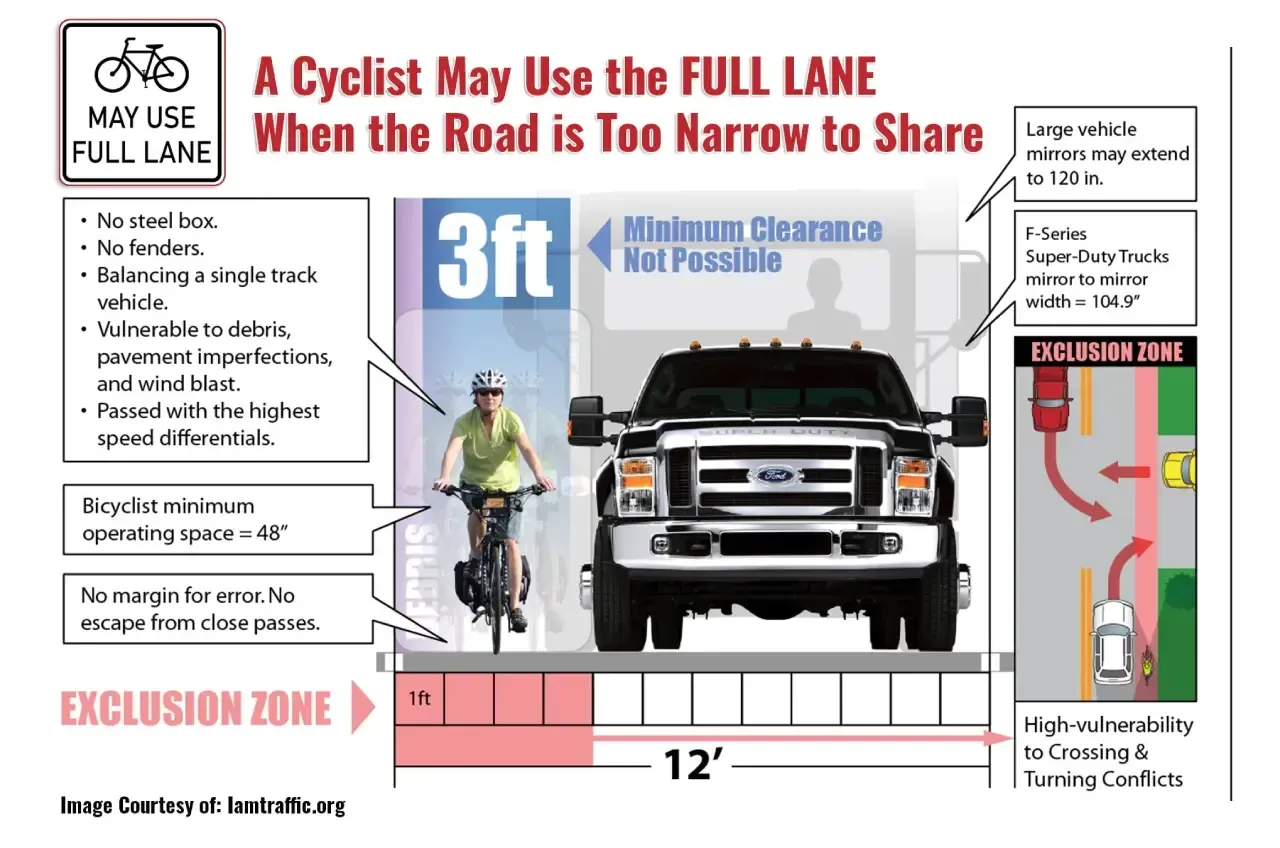
Riding two abreast and taking the lane are common practices used by cyclists to increase their visibility and safety. By occupying more of the road, cyclists can better protect themselves from common risks and ensure safer interactions with motorists.
Here are the key safety benefits:
1. Increased Visibility
Cyclists riding side by side are more noticeable to drivers. Enhanced visibility reduces the likelihood of drivers failing to see cyclists in time to react safely.
2. Discouraging Unsafe Passing
Taking the lane and riding two abreast encourages drivers to make a full lane change to pass, preventing dangerous "squeeze passes" where vehicles attempt to overtake cyclists within the same narrow lane. This practice ensures motorists only pass when it is genuinely safe to do so.
3. Defensive Positioning
On roads with narrow or substandard-width lanes, riding two abreast establishes a stronger presence and deters drivers from attempting risky overtakes. It ensures cyclists maintain control of the space needed for their safety.
Gaimon’s decision to take the lane and ride side by side with his riding partner was not an act of defiance but a necessary safety measure.
Lessons Cyclists Can Gain from Phil Gaimon’s Experience
Phil Gaimon’s YouTube video and court case highlight essential lessons for cyclists:
- Know Your Rights:
Phil Gaimon’s case underscores the importance of understanding cycling laws, such as California Vehicle Code 21202, which allows cyclists to take the lane when safety requires it. It does not prohibit riding side by side while taking the lane. - Challenge Misinterpretations:
Cyclists can politely defend their rights when others misunderstand cycling laws, as Gaimon did during his interaction with the deputy. Never be rude or engage in disrespectful behavior! - Document Interactions:
Recording encounters with law enforcement (where legal) may provide evidence if disputes arise, as Gaimon demonstrated by sharing his experience through video. - Seek Legal Support from a Reputable Bicycle Attorney:
Legal expertise from a cycling attorney like Bike Legal can make a significant difference when contesting wrongful citations or navigating complex legal situations. - Advocate for Safer Roads:
Gaimon’s experience highlights the need for cyclists to actively participate in advocating for better education, training, and enforcement of cycling laws to promote safer road-sharing practices. - Safety in Numbers:
Riding two abreast, when allowed, enhances visibility and reduces unsafe passing, reinforcing the practice as a lawful and practical safety measure.
A Call for Better Awareness and Change
Phil Gaimon’s traffic stop underscores the challenges cyclists face due to misinterpretations of their rights. While Gaimon’s case was dismissed, the time and effort he spent highlight the broader need for:
- Improved Law Enforcement Training: Ensuring officers understand cycling laws and apply them correctly.
- Public Education: Raising awareness of why cyclists take the lane or ride two abreast.
- Advocacy for Safer Roads: Supporting initiatives that prioritize cyclist and pedestrian safety.
Gaimon’s viral video is more than a momentary story—it’s a rallying point for respecting cyclists on the road and creating a safer environment for everyone. Legal support from Bike Legal ensures that cyclists can defend their rights and continue to advocate for change.
The Role of Bike Legal in Advocating for Cyclists’ Rights
Bike Legal played a pivotal advisory role in supporting Phil Gaimon during his legal challenge. Our team advised him on how California Vehicle Code 21202 applied to his case, helping him understand his rights to take the lane and ride two abreast. We also guided him on how to gather evidence, such as lane measurements and road conditions, to demonstrate the safety and legality of his actions.
As advocates for cyclists’ rights, our mission extends beyond legal representation. We are dedicated to educating the public about cycling laws, dispelling misconceptions, and promoting practices that ensure safer interactions between cyclists and motorists. By raising awareness about cyclists’ rights, we work to prevent misunderstandings like the one Gaimon experienced and to create a more equitable road-sharing culture.
If you or someone you know has been involved in a bicycle accident or has questions about your cycling rights, Bike Legal is here to help.
Request a free consultation by calling 877-BIKE LEGAL (877 245-3534)
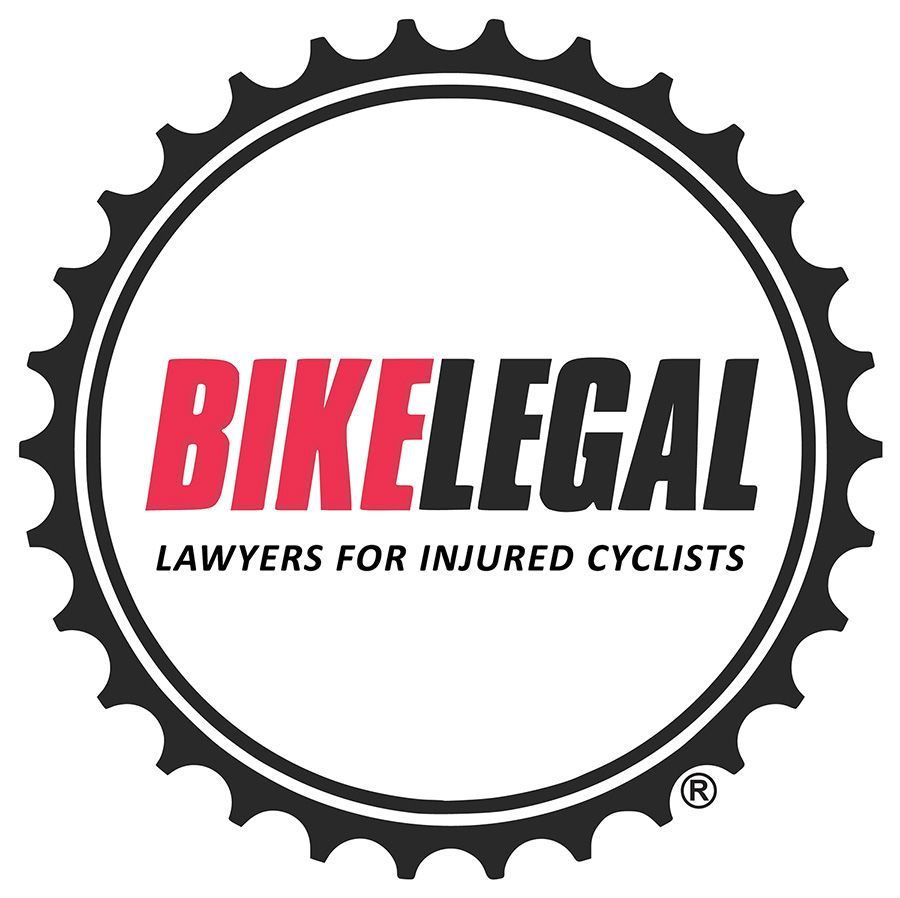
FAQ's
What does “taking the lane” mean, and when can cyclists do it?
“Taking the lane” means occupying the full lane, which cyclists are allowed to do under specific conditions outlined in California Vehicle Code 21202. These include when the lane is too narrow to share safely with a vehicle.
Is it legal to record an interaction with a peace officer?
Yes, the First Amendment generally protects your right to record peace officers in public, as long as it does not interfere with their duties or violate local laws. Keep your device visible and ensure the recording does not obstruct their work. Laws vary by state, so know your local regulations to stay compliant.
Can cyclists legally ride two abreast in California?
California law does not prohibit cyclists from riding two abreast when taking the lane for safety reasons. In situations such as narrow or substandard-width lanes, riding side by side enhances visibility and discourages unsafe passing, aligning with Vehicle Code 21202 exceptions. Additionally, cyclists may ride two abreast within a bike lane.
Read Next:
California OmniBike Bill AB1909: What It Means for Cyclist Safety
What to Do After a Bicycle Accident: A Cyclist's Guide (Checklist)
Bicycle Etiquette Guide: Essential Rules and Safety Tips for Cyclists
